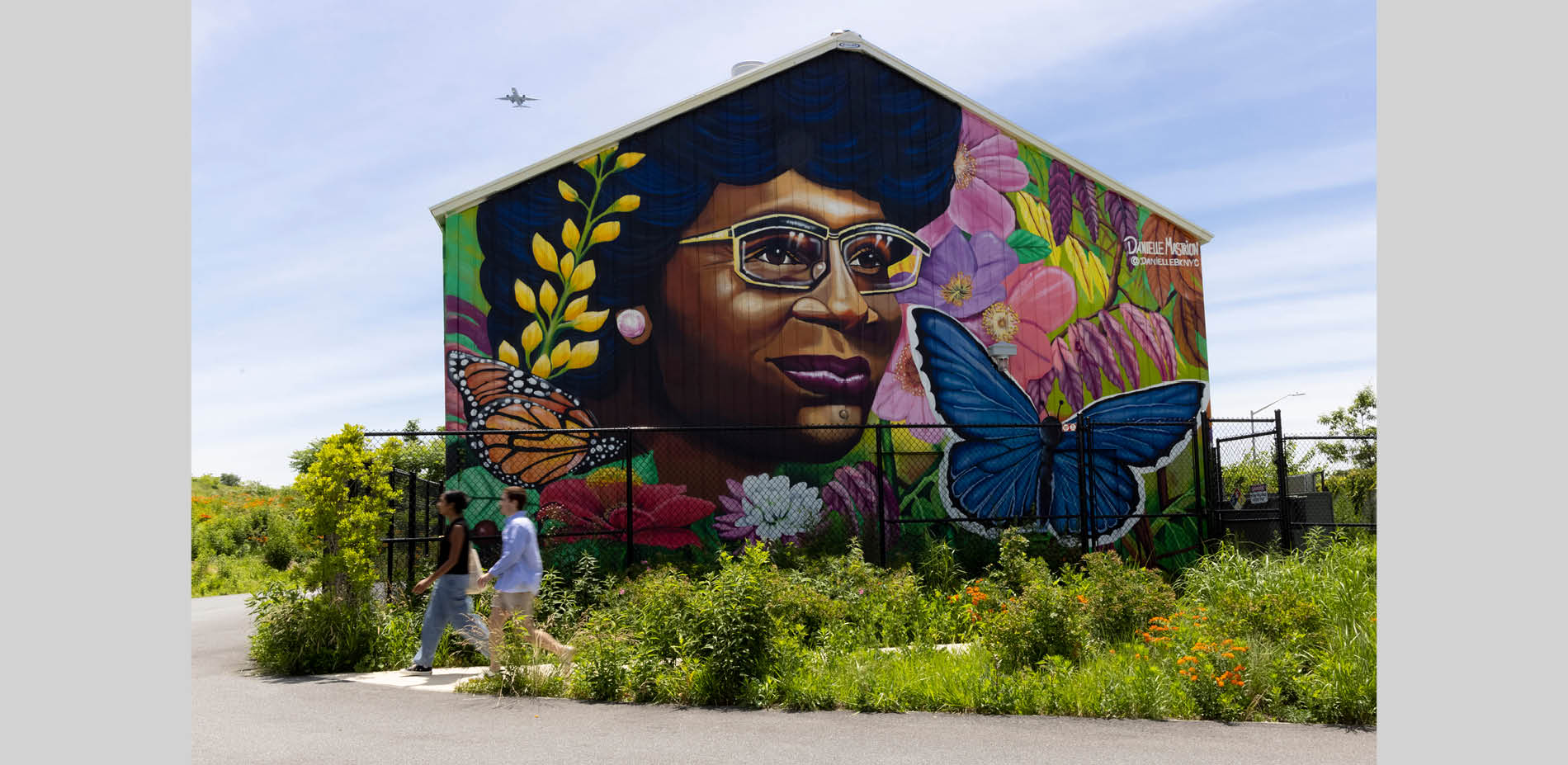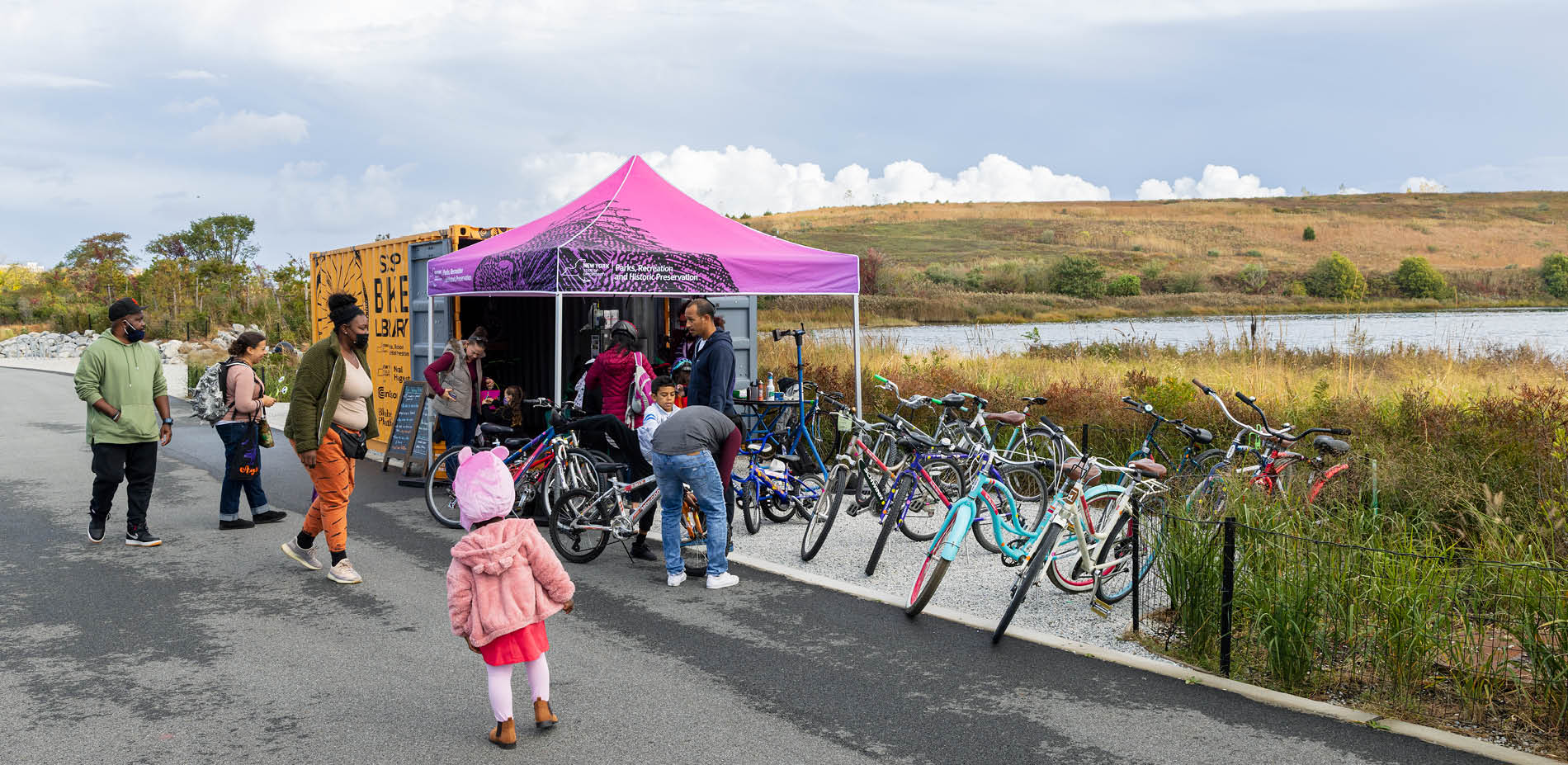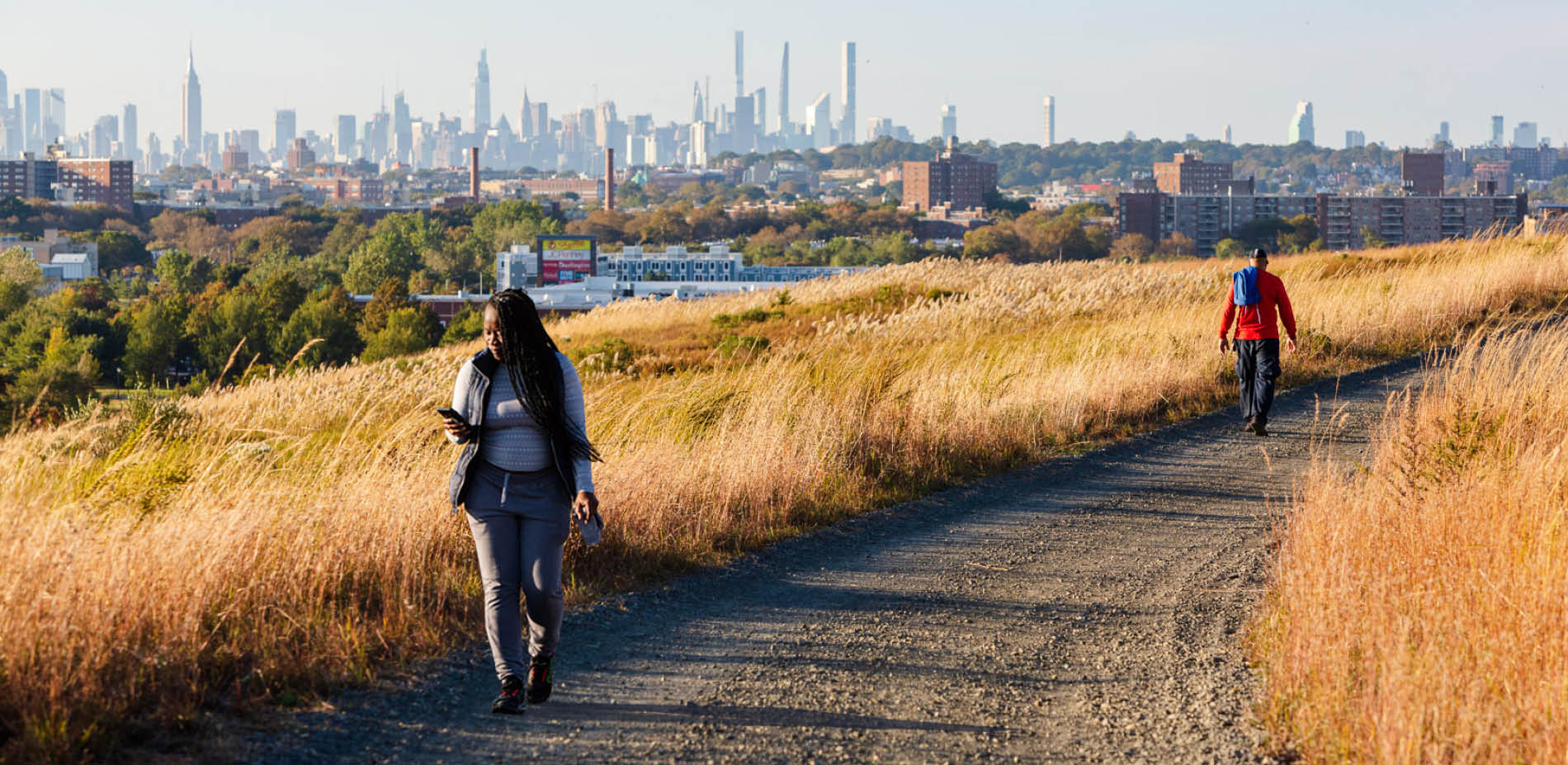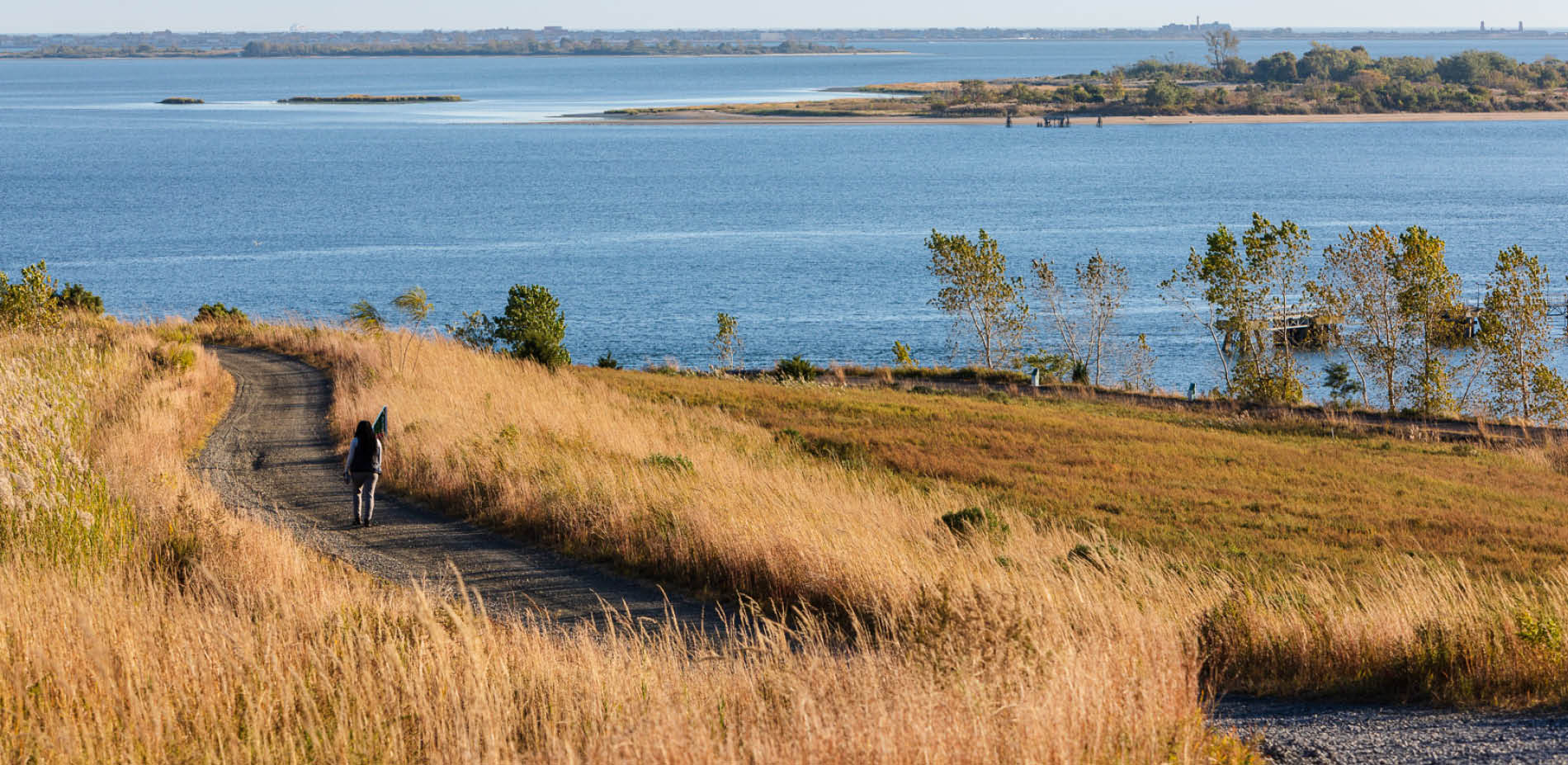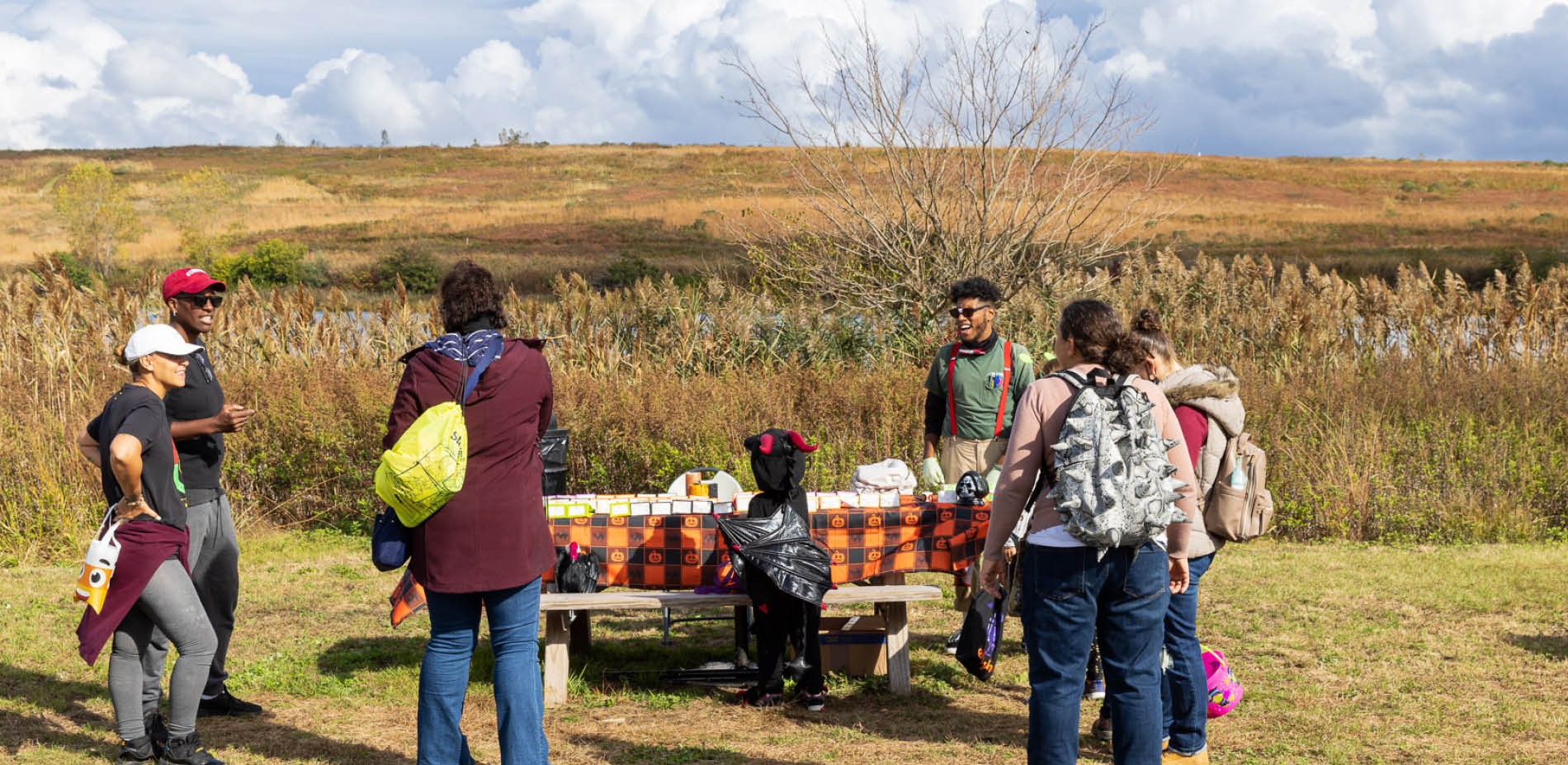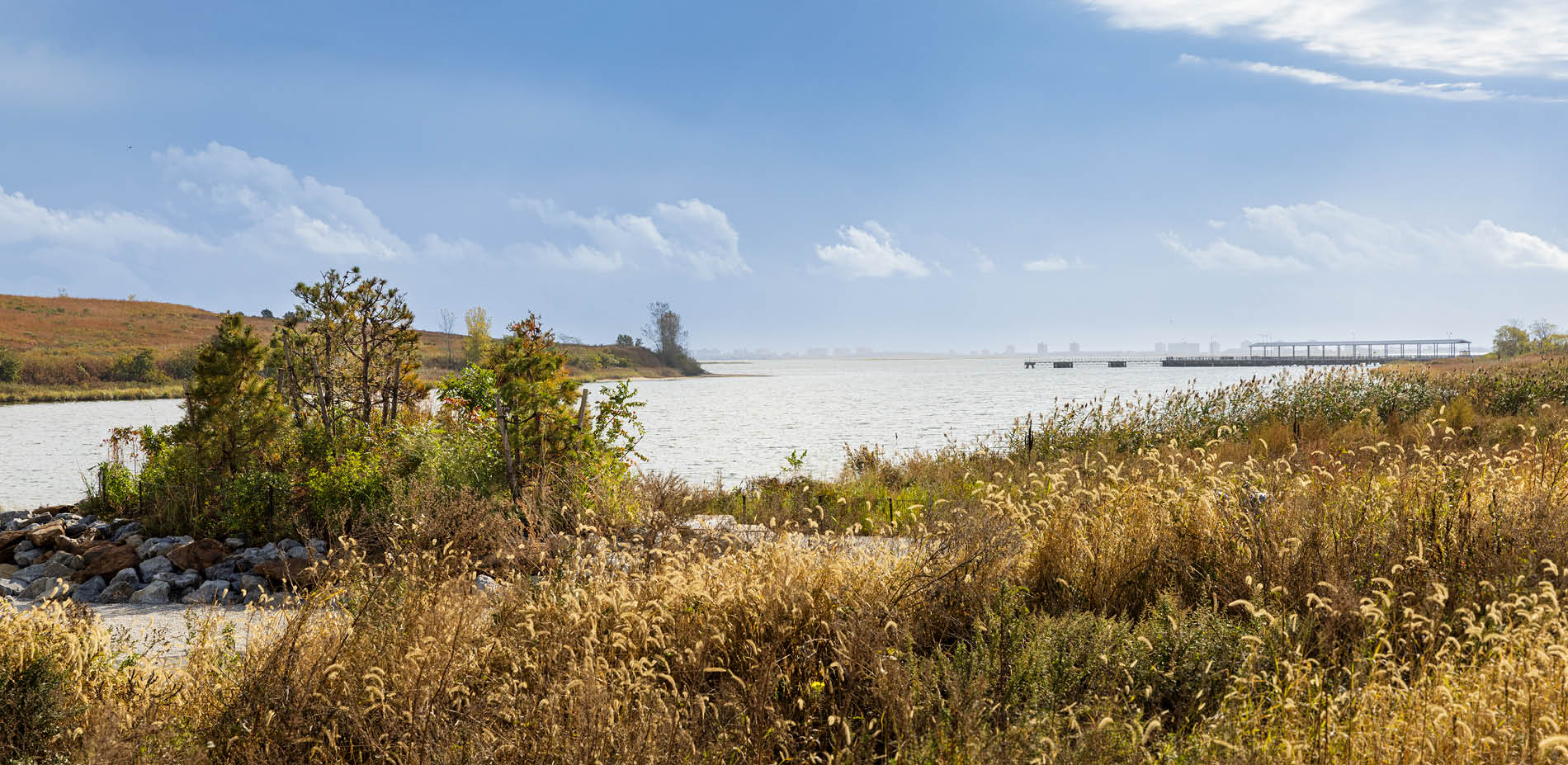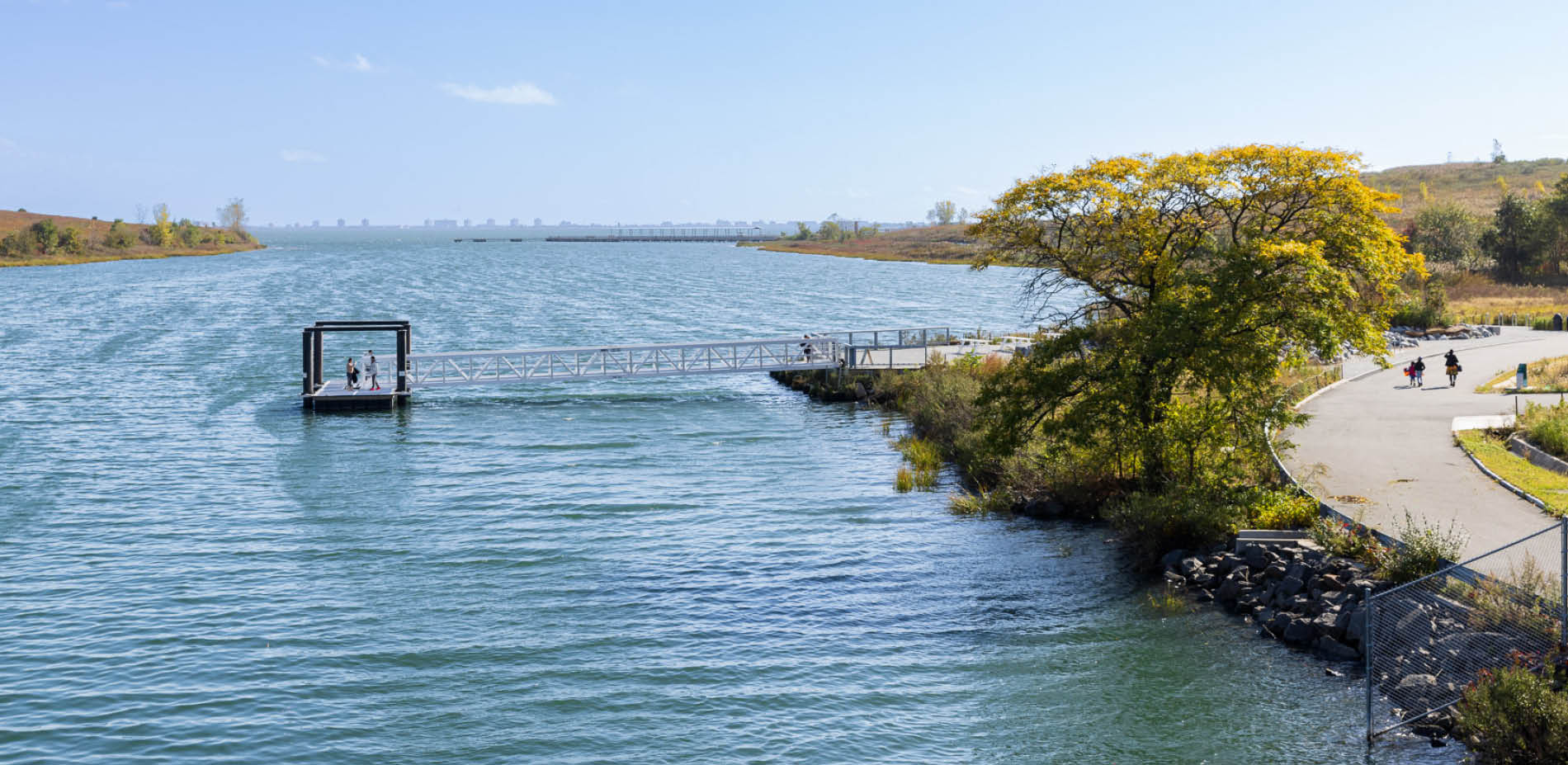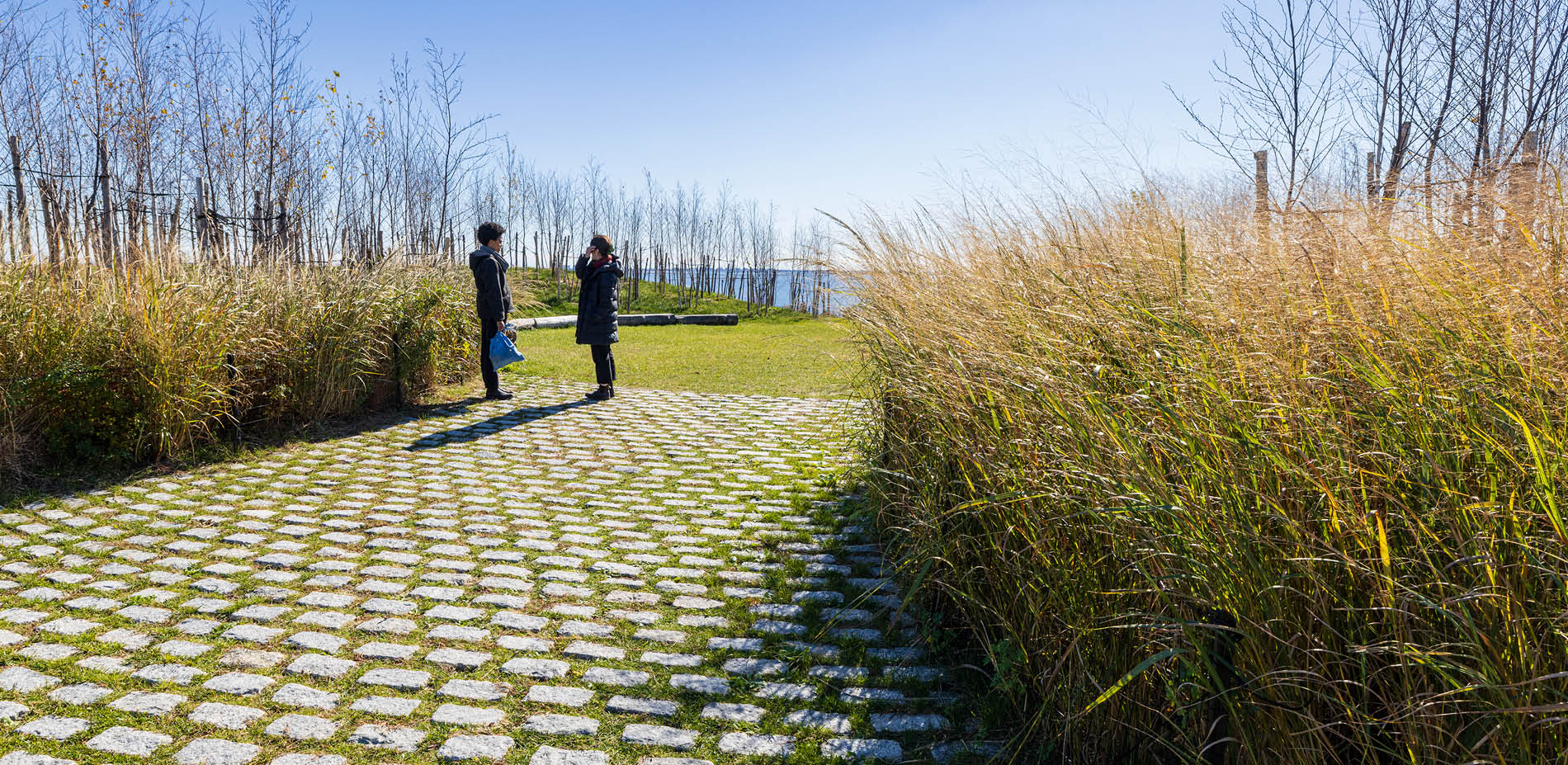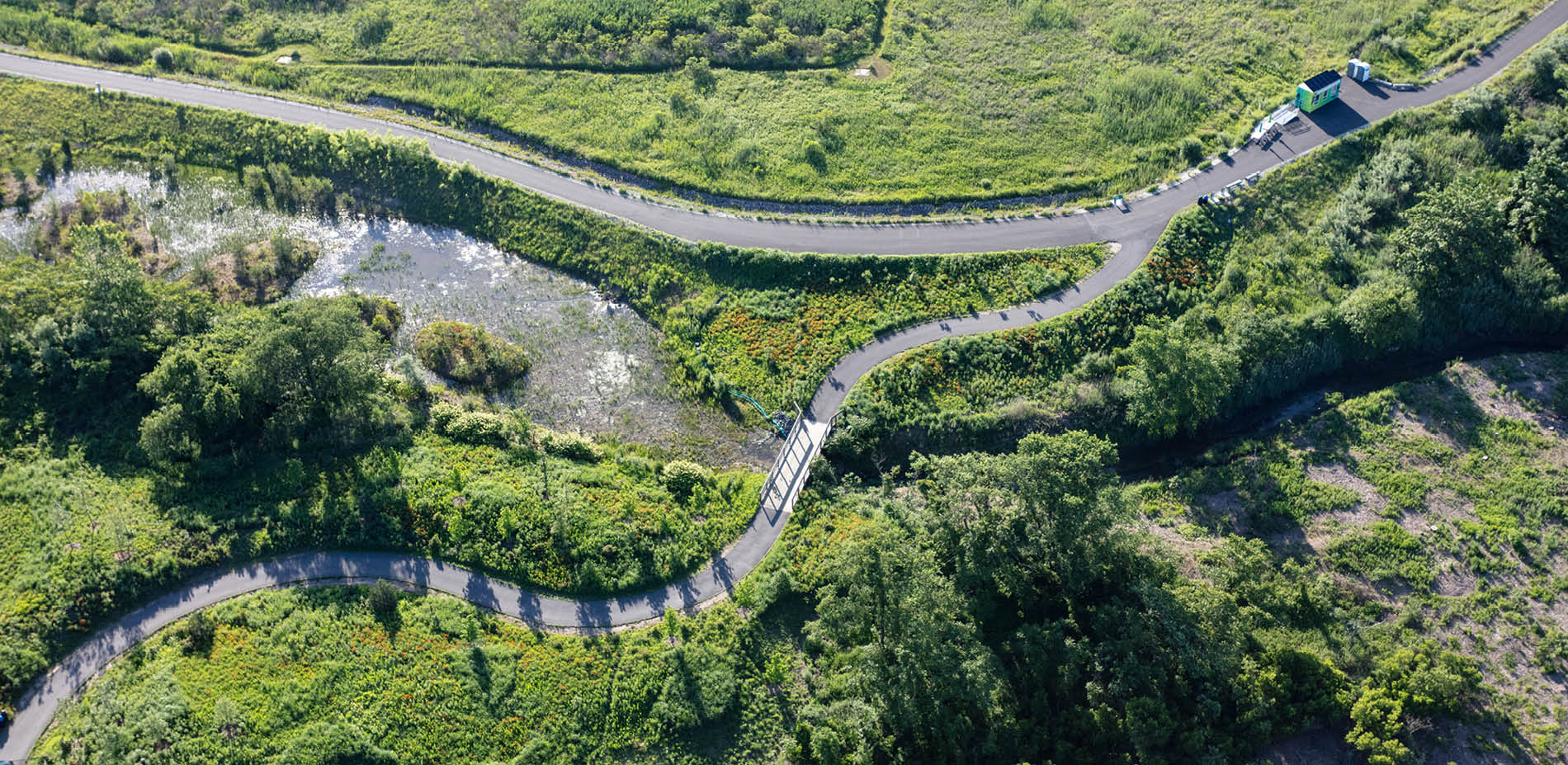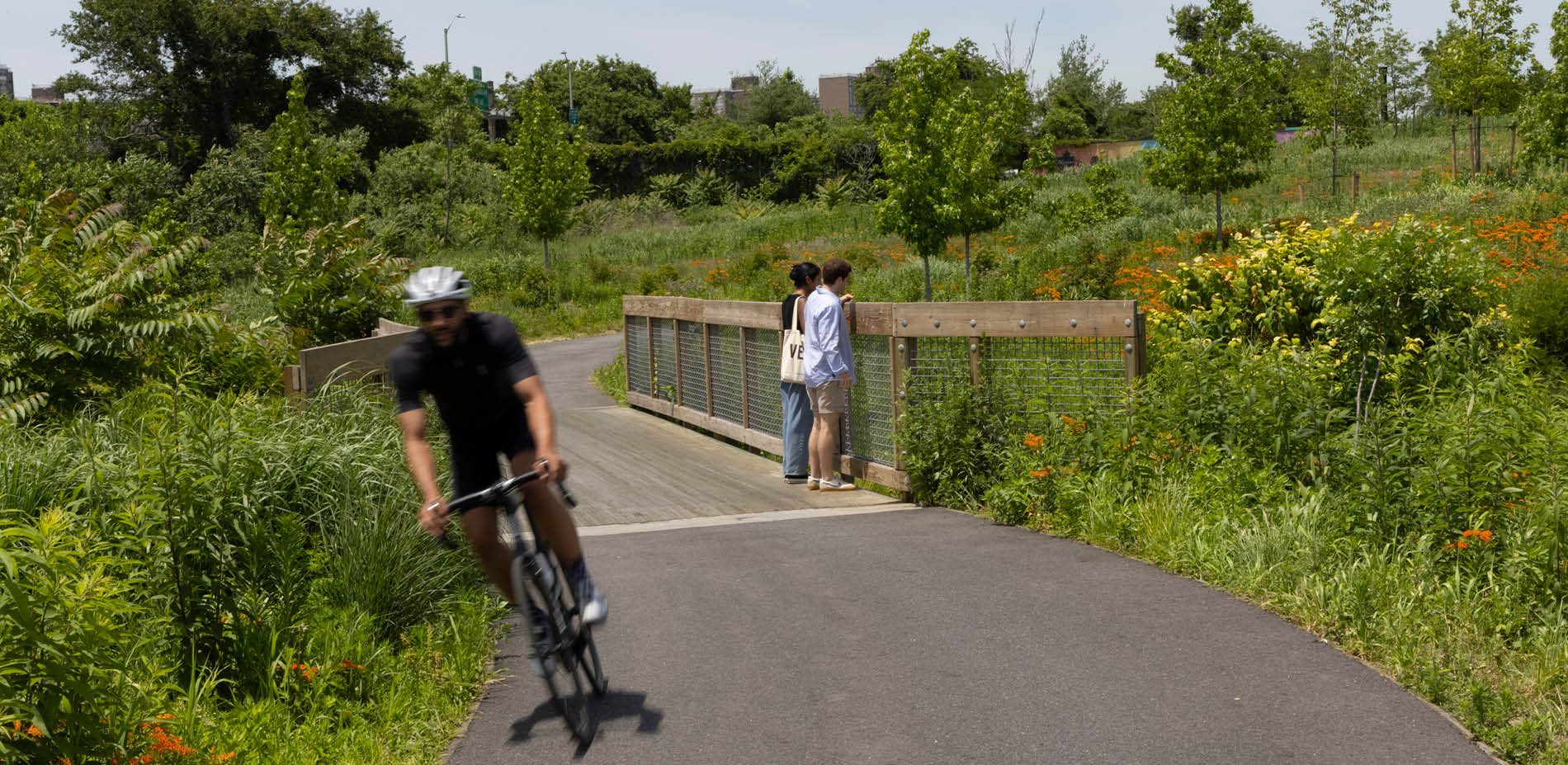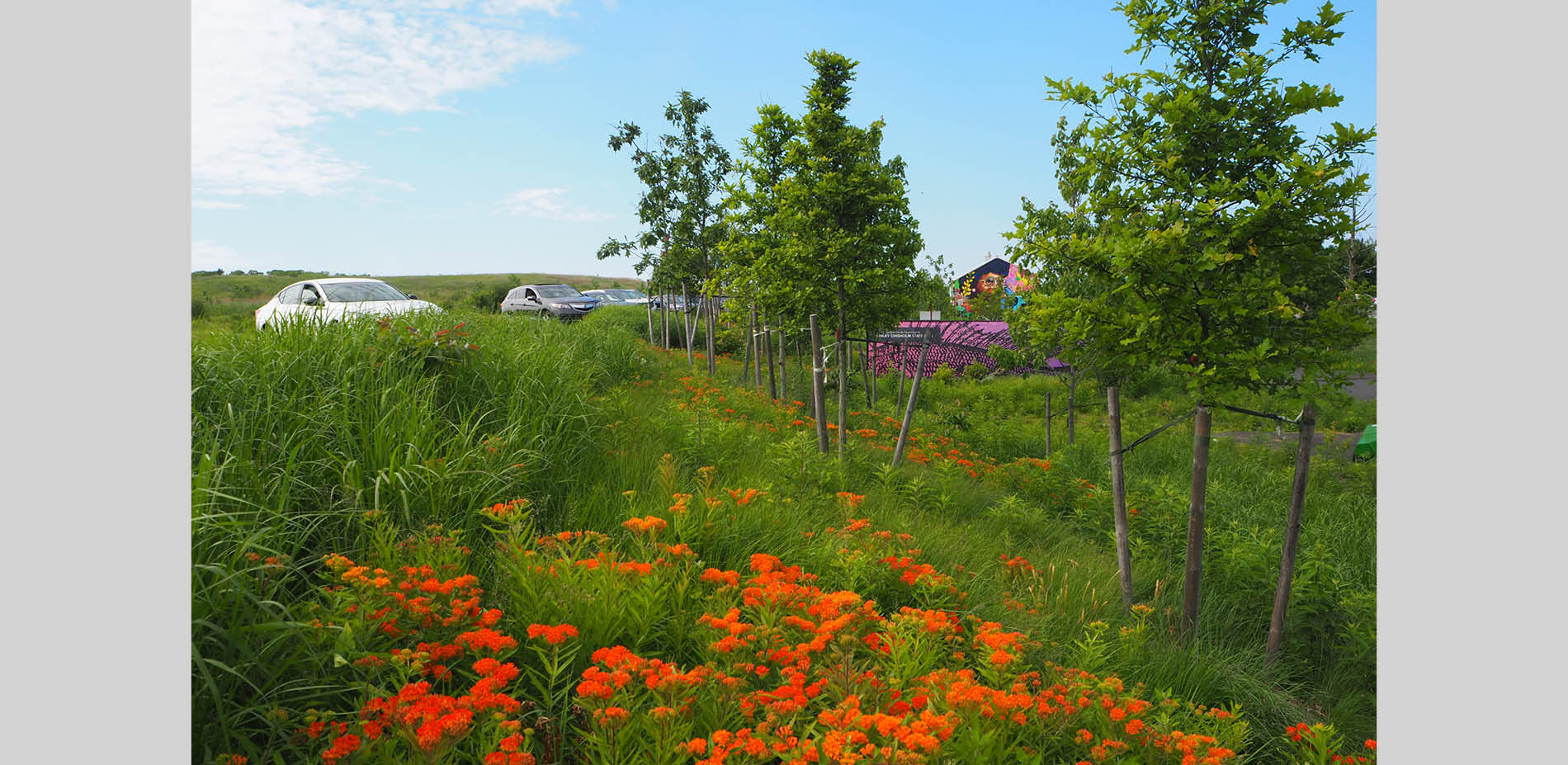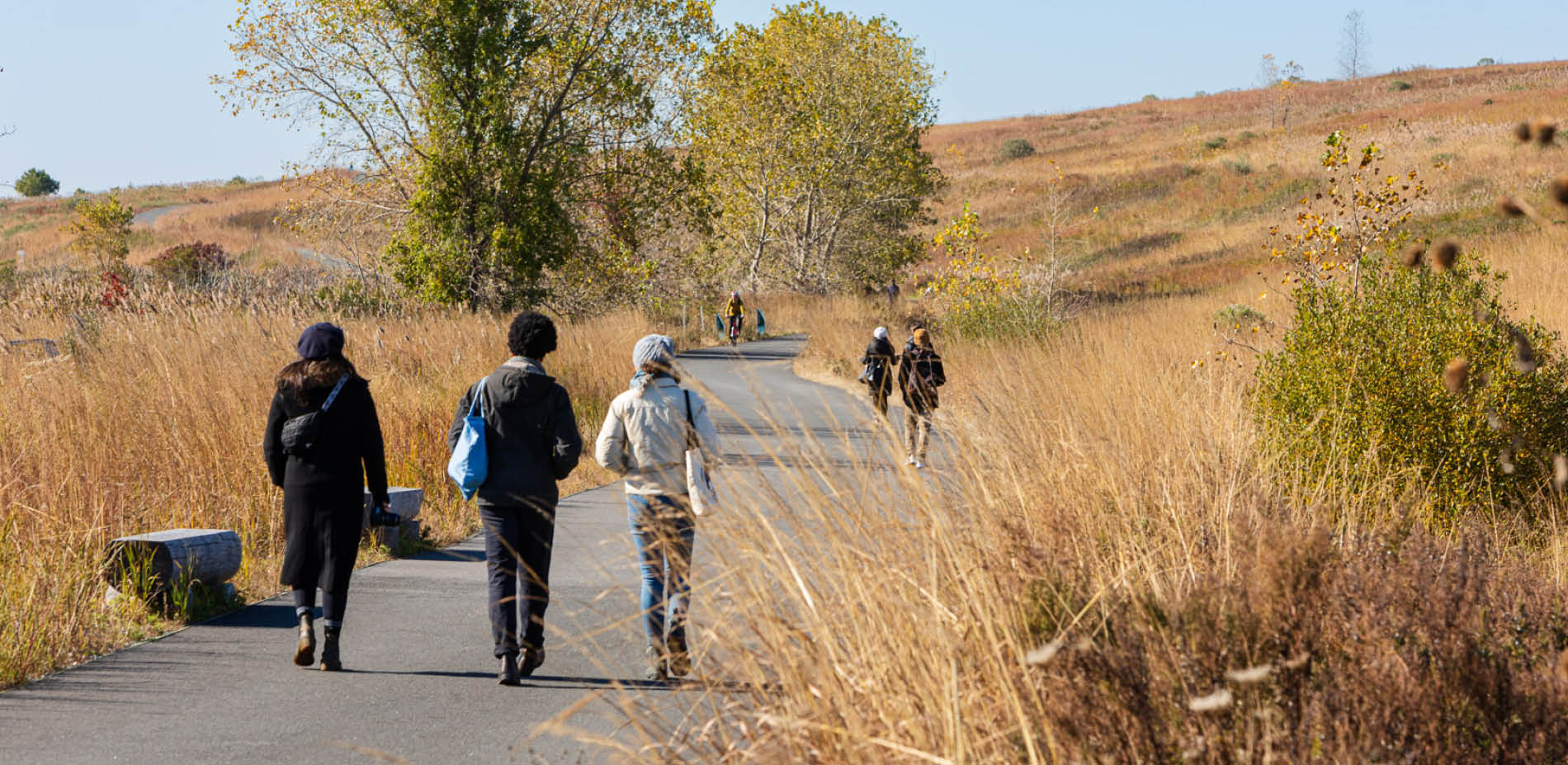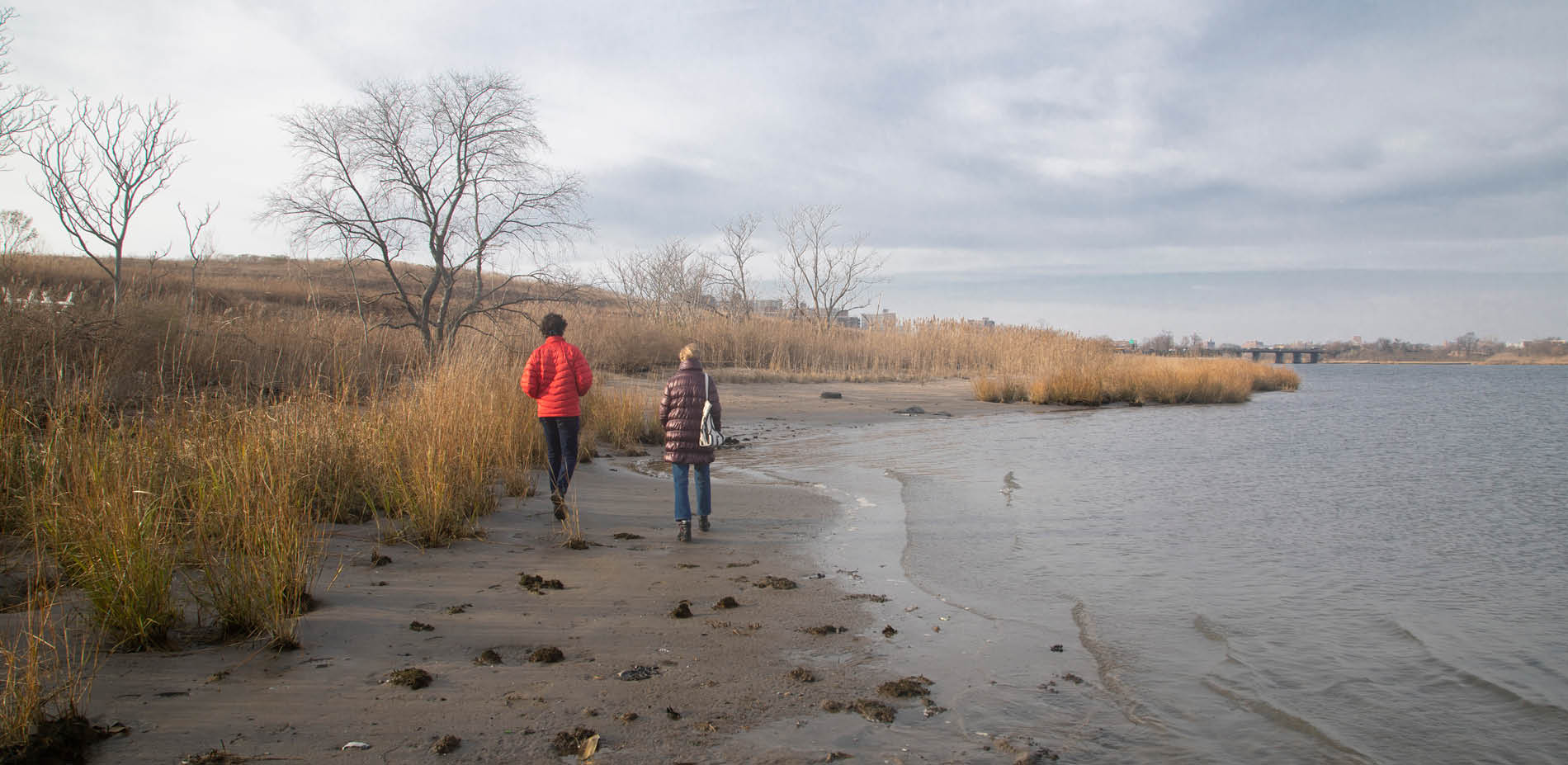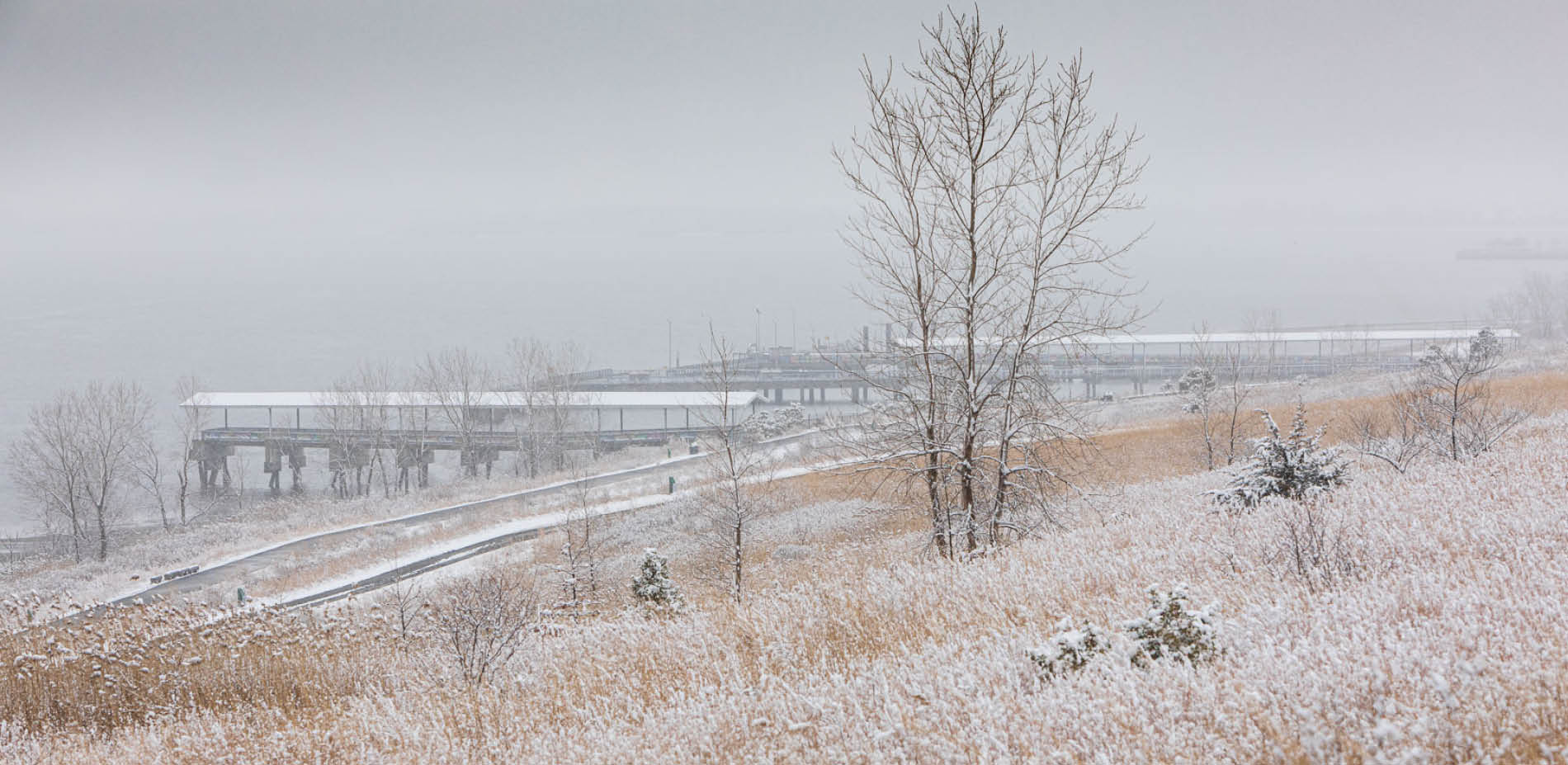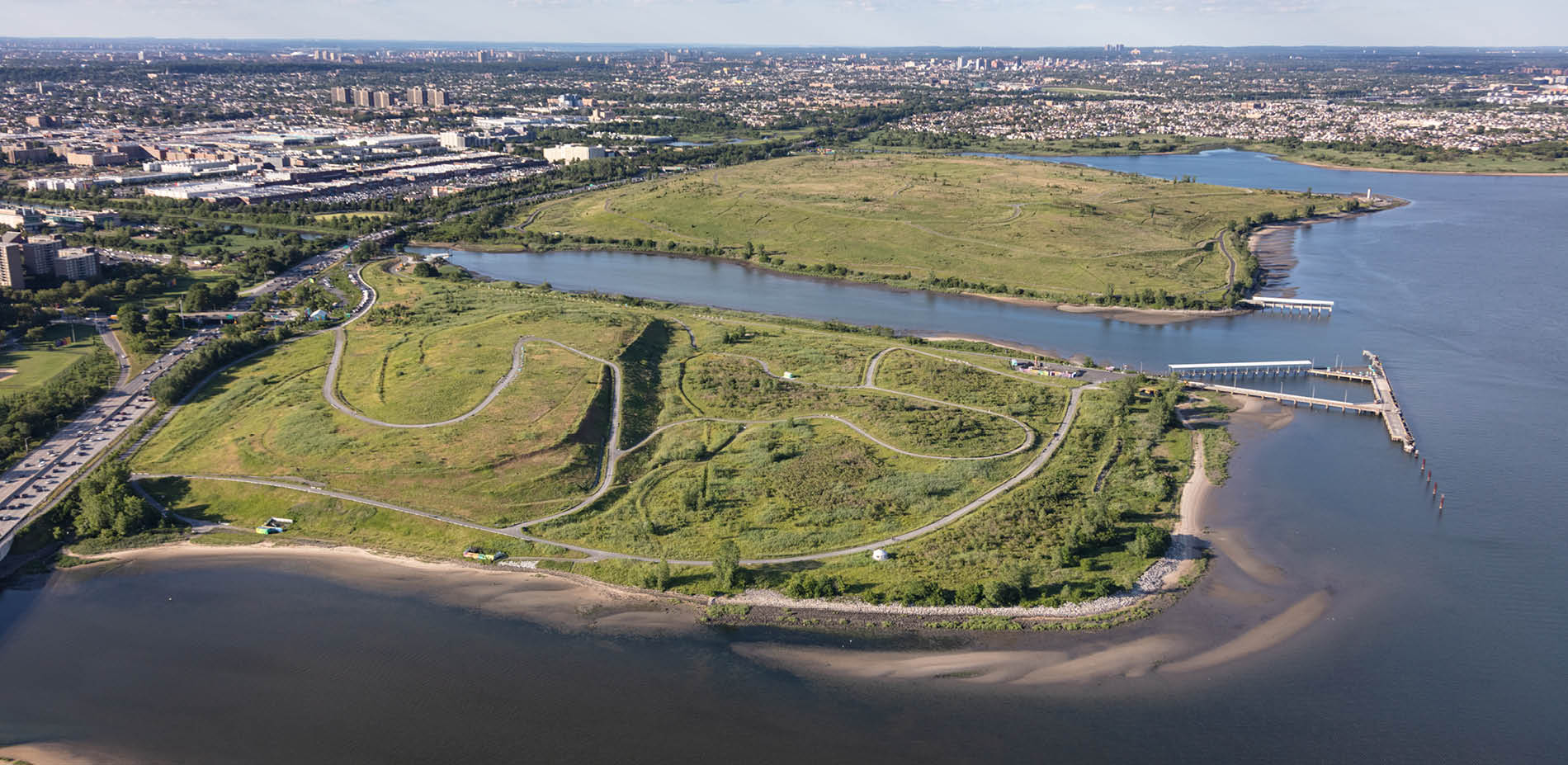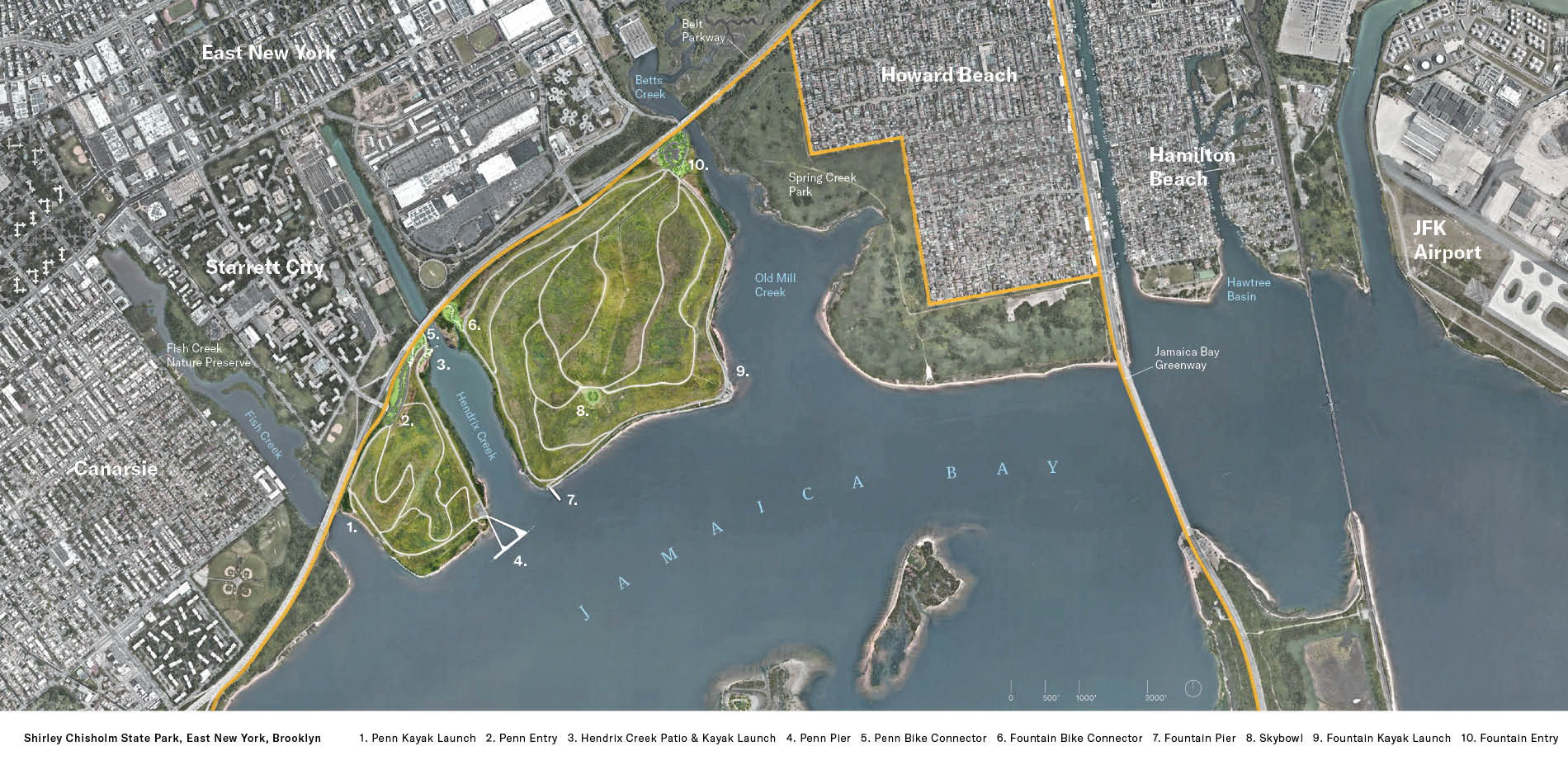Shirley Chisholm State Park
Honor Award
Urban Design
Brooklyn, New York, United States
Michael Van Valkenburgh Associates
Client: New York State Office of Parks, Recreation and Historic Preservation
A repurposed pier has become a popular spot to cast a line and picnic, and beaches are now accessible for wading and shoreline exploration. Invasive species management allows native coastal plants to take hold in order to expand habitat and increase resiliency. The jury called it an “inclusive, diverse, and inspiring tribute to a truly remarkable woman.”
- 2022 Awards Jury
Project Credits
WSP USA, Project Lead--Civil and Structural Engineering
Danielle Mastrion, Artist (Shirley Chisholm Mural)
Ecology and Environment, Inc., Environmental Consultant
Project Statement
Set along Jamaica Bay in southern Brooklyn, Shirley Chisholm State Park transforms a pair of closed-and-capped landfills into a vibrant community hub. When the landfills stopped operating in the 1980s, the city, building on research that had been conducted at a larger site on Staten Island, covered them with three feet of soil, making it possible to plant not just grass, which could hardly disguise the origins of the two hills, but thousands of native trees and shrubs. As the meadows began to flourish, community advocates were determined to see the fenced-off wonderland become a badly needed park. But how? On a tight budget and compressed schedule, the landscape architects created new entrances to set a welcoming tone for the entire 407-acre parcel, and then devised nodes both for active recreation and for quiet contemplation. Those cover a small fraction of the park’s land area but draw people onto its 10 miles of trails. The park was immediately embraced by the community, making it a fitting tribute to Brooklyn’s pioneering public servant Shirley Chisholm.
Project Narrative
For New Yorkers driving to Kennedy Airport or the south shore of Long Island, the trash mountains were unpleasant; for residents of the adjoining neighborhoods they were a noxious fact of daily life. These were the Penn and Fountain landfills, owned and operated by the City of New York from the 1950s through the 1980s. In its last year of operation, 1985, the Fountain landfill sucked up an incredible 8,200 tons of trash each day. Although the Federal government intended to include part of the property in its new Gateway National Park, the city was responsible for continuing remediation of the landfills. As part of that process, it had the foresight to cover the hills’ plastic caps with 1.2 million cubic yards of soil (enough to fill nearly 100,000 dump trucks), eventually allowing a wide variety of plants to grow. That included trees, which were normally discouraged on landfills because their roots can pierce the plastic caps, but which, if chosen carefully, develop shallow root systems that help keep topsoil in place. Between 2004 and 2008 the site was planted with more than 33,000 trees and shrubs (most grown from seed, to allow them to adapt to the environment), along with native grasses and wildflowers. The result was a diverse ecosystem of coastal meadows, wetlands, and woodlands that has attracted a variety of local wildlife. But it wasn’t a park, because there was no way for people to get in, and nothing waiting for them if they did. Residents of the East New York neighborhood were ready for the fences to come down.
Then, in 2017, the landscape architects were invited to a meeting with the state parks commissioner. A handful of public officials had worked tirelessly to fashion a cooperation agreement among the state, which would run the park; the federal government, which agreed to lease the land to the state for 60 years; and the city, which remains responsible for safely decommissioning the landfills. With the agreement in hand, the state was ready to create a park. But it had just $35 million to spend. The landscape architects helped the client see what could be accomplished on that budget.
Tackling the entire 407 acres was out of the question. Luckily, with 3.5 miles of Jamaica Bay shoreline, the marshy riverine ecology of Hendrix Creek, and the slopes of waving grasses and wildflowers, the site was already appealing. But there was not a single source of shade and nothing of human scale to make people feel welcome. So the firm proposed targeted interventions that would seem small relative to the overall site—covering about 15 acres—but would serve as portals, connectors, focal points and destinations. The state insisted that the two landfill sites be connected across Hendrix Creek; the landscape architects realized that with the addition of several sinuous paths, an existing bridge would not only serve as that connector but would make the park part of a citywide bike trail system, and a stopping point for hundreds of riders each day.
Meanwhile, the state wanted to build an education center for visiting school groups, but didn’t have the funds. The landscape architects suggested distributing yurts around the site to serve as temporary mobile classrooms.
Inside the Pennsylvania Avenue Entrance the landscape architects built a parking lot replete with hardy coastal plants. An artist born and based in Brooklyn transformed all four walls of an operations building into a richly colored mural, with a portrait of Shirley Chisholm, the first African American woman elected to Congress and the first woman and African American to run for president, as its focal point.
The Fountain Entrance serves as the terminus of the city’s new Fountain Avenue bike lane. It leads visitors along Bett’s Creek and up into the park. Designated areas for food trucks draw crowds to the entrance areas at lunchtime.
From the two entrances, miles of paths lead to “points of interest” like the Hendrix Patio, a relaxing space on the banks of Hendrix Creek. The landscape architects rebuilt the water’s edge, with planted mounds raised above flood levels and held in place by granite seating. A pair of “bicycle libraries” allow visitors to borrow a variety of two-wheeled vehicles. Now the park is the go-to spot for East New York parents teaching their kids to ride.
The Sky Bowl is a new, raised landform atop the former Fountain Avenue landfill, at an elevation of 130 feet. Carefully engineered with the addition of new, lightweight fill over the cap, the bowl is a lush, sodded mound surrounded by log benches (designed for the site) and a ring of trees. “It takes work to get up there, but it’s worth every step,” said one local official. “You're in a halo of river birch trees, and you feel like you’re suspended out over the water.” Views include the Manhattan skyline, Coney Island, the Verrazano-Narrows Bridge, Jamaica Bay, and the Atlantic Ocean.
The landscape architects recognized that two existing piers could give visitors a new way to experience Jamaica Bay, but that shade would be required in the summer. The landscape architects augmented the two piers with customized shade structures, as well as new railings and seating. At the Penn Pier, part of which is still used for city storm management operations, the landscape architects worked with several agencies to facilitate public access and specifically to designate an area for fishing.
The state insisted that many of the new amenities be open within two years of the initial planning meeting. For the landscape architects, that made for some very long days (and nights) at the office. But when a member of the team visited the park with her family on opening day, she says, “It was obvious that the rush was worth it. This park being open meant so much to the people who lived nearby and they were flooding it -- walking, fishing, biking, throwing birthday parties, relaxing near the water. It really felt like something they’d been waiting for their entire lives.”
The potential for the park had always been there. The landscape architects helped realize that potential. As one member of the design team said, “Something very cool happened here and we played a small part."
According to one state official who visits often, “This is a miracle park, a rare example of all three levels of government working together. I think Shirley Chisholm would be very pleased.”
Products
-
Parks/Recreation Equipment
- Trash and Recycling Receptacles, Global Industrial
- Drinking Fountain, Elkay
- Movable Vehicle Barrier, Crowd Control Warehouse
- Picnic Tables, Pilot Rock, RJ Thomas Mfg. Co., Inc.
- Metal Frame Beach Umbrella, Anywhere Chair
-
Hardscape
- Stone Block Benches, Champlain Stone
- Stone Cobbles, Archean Granites
Plant List
- Gray Birch
- Red Oak
- White Oak
- Pin Oak
- Red Cedar
- Staghorn Sumac
- Wild Rose
- Bayberry
- American Holly
- Sweet Fern
- Smooth Aster
- Butterfly Weed
- Sideoats Grass
- Switchgrass
- Little Bluestem
- Red Columbine
- Blue Wood Aster
- White Wood Aster
- White-fringed Sedge
- Appalacian Sedge
- Rosy Sedge
- Lovegrass
- Ironweed
